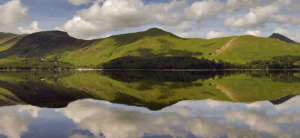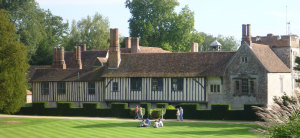From California to the New York Island, Americans have a stake in the National Trust’s mission
 I am thrilled to be launching Royal Oak’s AngloFiles blog. AngloFiles will be the keystone of a more vital, informative and engaging digital presence for our ever-expanding community of members, supporters and friends. Our vision is to provide you with a varied stream of lively, enriching content both related to the Foundation’s work in partnership with the National Trust of England, Wales and Northern Ireland and on a wide range of Anglocentric topics.
I am thrilled to be launching Royal Oak’s AngloFiles blog. AngloFiles will be the keystone of a more vital, informative and engaging digital presence for our ever-expanding community of members, supporters and friends. Our vision is to provide you with a varied stream of lively, enriching content both related to the Foundation’s work in partnership with the National Trust of England, Wales and Northern Ireland and on a wide range of Anglocentric topics.
So, to start things off, I’m going to plunge into addressing one of the most frequently asked questions I encounter on my travels: “why do Americans want to support preservation and conservation work in the UK?” First, I have to say that this is generally asked not by Americans or our supporters but by Brits themselves.
After more than four years as Royal Oak’s Executive Director, my answer is simple: “We feel profoundly connected – each for our own personal reasons – to Britain’s history and beauty.” In other words, we believe the Trust’s slogan “Forever, For Everyone” is truly all-inclusive. Imbedded in this belief is a sense that the Trust and the places it protects are exceptional; certainly the distinctiveness of the British country house and estate has been commented on by foreign visitors for centuries, and is perhaps truer today than ever. While the UK’s landscapes are among some of the most varied and spectacular in the world, from the fenland of East Anglia to the bucolic splendor of the Cotswolds and the Yorkshire Dales and the sublimity of the Lake District or Snowdonia. In this regard, we are no different than the Trust’s members and supporters in the UK, we want to ensure that these special places are protected and accessible, now and forever.
The exceptionalism of the National Trust as an organization and a movement is also something that many of our supporters remark on to me. In the 120 years since its founding the Trust has evolved from a tendentious band of idealists into Europe’s largest and most effective conservation organization. The Trust is the UK’s largest private landowner (if we consider the royal family as a public entity in this instance), and a stunning factoid is that 43% of the rainwater in England and Wales drains through its lands.
The Trust has also played a leading role in the rescue of the country house and its collections – while historic properties under its care number over 300, there are more than 750,000 objects of fine and decorative arts in its collections – and this is a topic that particularly fascinates and inspires me, as an architectural historian and someone just besotted with beautiful, old things! I’m presenting my lecture “The Country House in the National Trust” as part of this spring’s Drue Heinz Lectures, and I encourage you to come along if you’re in New York, Philadelphia, or Boston’s North Shore.
At the risk of being a spoiler, I’ll leave you today with a thought about why I think the Trust’s has been so successful in its work – inherent in its constitution is the belief in the power and responsibilities of ownership. The first National Trust Act of 1907 gave the Trust the power to hold property inalienably, that is, any property so held can only be sold or removed from its protection by an act of Parliament. This has been confirmed and enhanced in the five subsequent National Trust Acts of the 20th century. The message to supporters around the world and to its 5,000 staff and 60,000 volunteers is clear: the National Trust is committed to its purpose forever.





